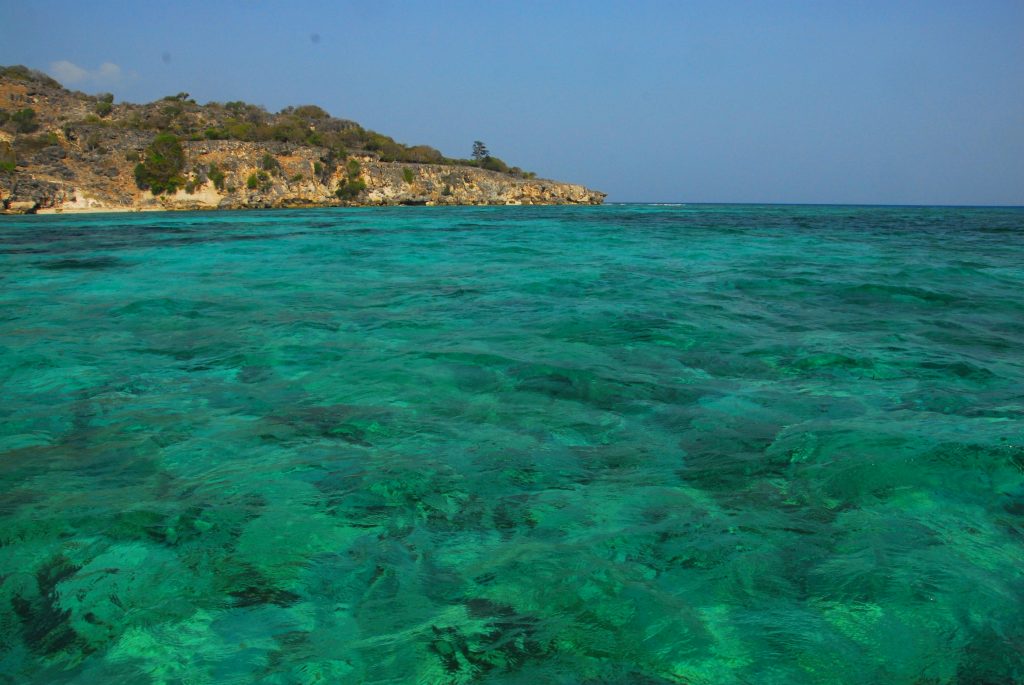Amazing and atavistic Atauro, avidly appreciated by autonomous aquanauts
Subscribe
Login
0 Comments
Oldest

 Now, getting back to my original reason to post this. The island landscape may appear barren and featureless during most of the year, but once you get into the water you will be overwhelmed. I’ve come across fish while snorkelling that I’ve not been able to identify despite more than three decades of diving experience in Southeast Asian waters and all the latest illustrated fish guide books in my possession. And that was just off the main, ‘common’ reef off Beloi, on the east coast. Further up, I’ve seen pods of melon headed whales, hundreds of them in a shallow bay within a stone’s throw off the beach.
Now, getting back to my original reason to post this. The island landscape may appear barren and featureless during most of the year, but once you get into the water you will be overwhelmed. I’ve come across fish while snorkelling that I’ve not been able to identify despite more than three decades of diving experience in Southeast Asian waters and all the latest illustrated fish guide books in my possession. And that was just off the main, ‘common’ reef off Beloi, on the east coast. Further up, I’ve seen pods of melon headed whales, hundreds of them in a shallow bay within a stone’s throw off the beach. On the west coast, uninhabited and very much wild, I’ve had the pleasure of diving a pristine, virgin wall (just one of several) on my own, with the resident bull shark patrolling the outer edge of the reef studiously ignoring me as I made my way to the drop-off point. The multiple colours and abundance of the soft corals that I encountered on my way down, covering much more than the first forty meters of the seemingly never-ending vertical wall, challenge any of the Fiji locations touted as the best soft coral walls in the world. Barely a stone’s throw north of there is an extensive and stunningly beautiful reef flat, swept by fierce currents and only accessible for one hour each day, when the tide turns (I know all about it, don’t I? Having insisted on checking it out at the wrong time, being cocky and thinking that I’m experienced enough, and nearly getting swept out to open water.). The locals from the only village close to this part of the island call it Turtle Point. Guess why?
On the west coast, uninhabited and very much wild, I’ve had the pleasure of diving a pristine, virgin wall (just one of several) on my own, with the resident bull shark patrolling the outer edge of the reef studiously ignoring me as I made my way to the drop-off point. The multiple colours and abundance of the soft corals that I encountered on my way down, covering much more than the first forty meters of the seemingly never-ending vertical wall, challenge any of the Fiji locations touted as the best soft coral walls in the world. Barely a stone’s throw north of there is an extensive and stunningly beautiful reef flat, swept by fierce currents and only accessible for one hour each day, when the tide turns (I know all about it, don’t I? Having insisted on checking it out at the wrong time, being cocky and thinking that I’m experienced enough, and nearly getting swept out to open water.). The locals from the only village close to this part of the island call it Turtle Point. Guess why? Off the southern tip, and if you’re patient enough, you may come across dugongs calmly grazing sea grass along the gentle reef slopes. And just crossing the twenty-plus kilometres wide channel between Dili and Atauro, it’s almost impossible not to see dolphins playing or, if you’re there in the right season, pilot whales, humpbacks and even blue whales during their annual migration.
Off the southern tip, and if you’re patient enough, you may come across dugongs calmly grazing sea grass along the gentle reef slopes. And just crossing the twenty-plus kilometres wide channel between Dili and Atauro, it’s almost impossible not to see dolphins playing or, if you’re there in the right season, pilot whales, humpbacks and even blue whales during their annual migration.